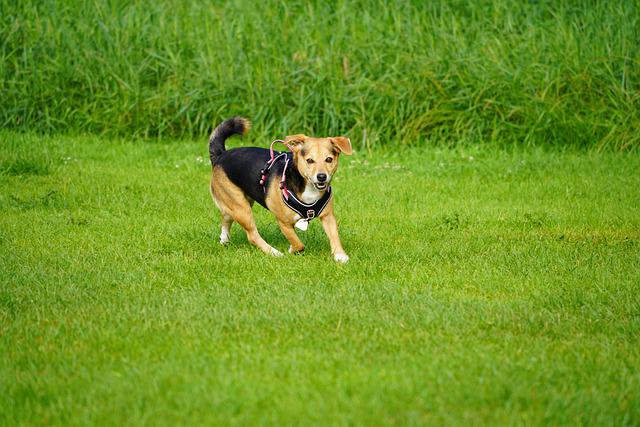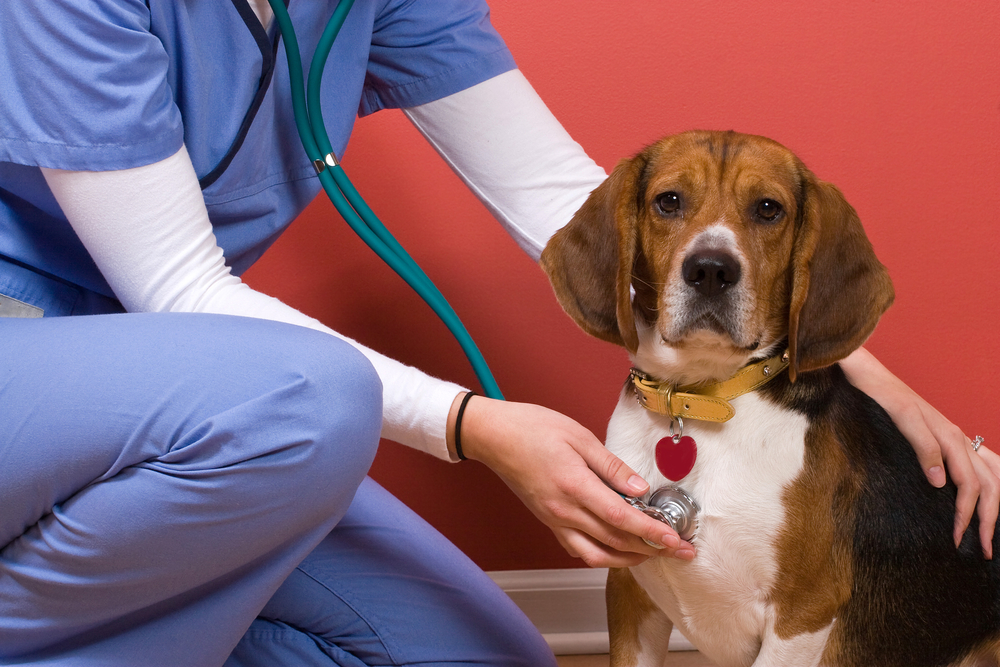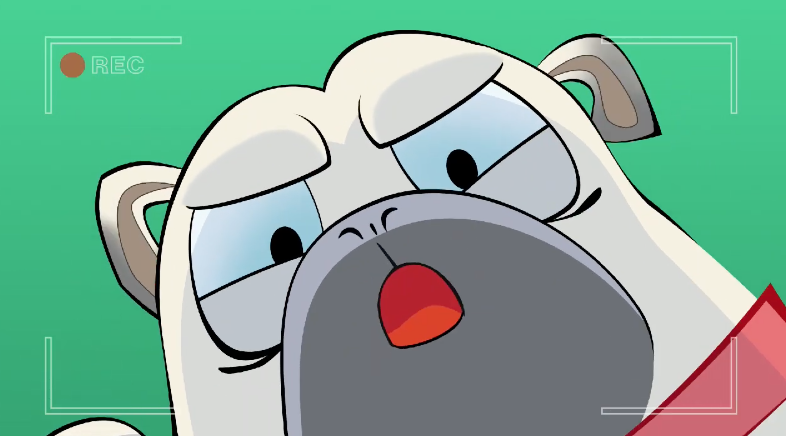

Why do dogs chase their tails?
A dog may chase their tail for a number of reasons, some benign and other serious. If you’ve ever wondered what might inspire the chase, read on for answers.

Writer Animalia Team
6 min read

A dog chasing their tail is a curious sight. Is it a delightful game or a Sisyphean struggle? Are they happy for the exercise, or frustrated that they’ll never quite nab their elusive prey? Every dog owner has seen their dog make a game of tail chasing, but what’s the source of this strange fixation? In short, it depends. Close observation of your dog could help you chase down the answer.
If you’ve got a tail-chasing pup ask yourself whether it looks like a real obsession. Occasional tail chasing typically isn’t a reason to call the vet. Non-stop chasing, however, may be a sign of serious trouble. Let’s take a look at some of the most common reasons dogs chase after their tails.
Common reasons for tail chasing
Boredom
If you leave a dog alone for an extended period without toys or another source of stimulation, they’ll often take the most obvious route and start chasing their tail. Don’t leave your dog to tire themself out with fruitless pursuit. Make sure to leave plenty of toys behind to keep them entertained and happy.
Playfulness
Admit it, you’d probably give chasing your tail a try if you were a young puppy. It’s a normal part of growing up and experiencing the world around them. Puppies, like human babies, explore the world in part with their mouths. As such, tail chasing is more common and more acceptable in younger dogs.
Stress and anxiety
Tail chasing could point to stress and anxiety in dogs. Repetitive actions like a never-ending chase could be a way of coping and seeking comfort. Look out for potential anxiety triggers like unsuitable living conditions. A dog may also feel anxious as a result of poor socialization. If anxious, repetitive behaviors persist, consult your vet or a canine behaviorist.
Parasites – fleas, ticks, worms
Untreated flea or tick infestations could leave your dog with an especially itchy tail. In these instances, they may chase their tails in hopes of relieving their discomfort with a bite. Alternatively, your dog may not be chasing their tail at all. Intestinal worms can irritate your dog’s anal region and inspire a chase. Make sure to contact your vet ASAP if you think parasites are to blame for your dog’s behavior.
Attention seeking
Maybe your dog’s just hoping you’ll notice them. Maybe they’d be glad to know you’re reading this and acting on your observation. Your dog might be chasing their tail to see if you’ll laugh, reprimand them, or otherwise show interest. Rewarding the behavior with attention may wind up reinforcing it, so be careful if you think your dog’s tail chasing is just attention-seeking. You don’t want it to become an obsessive habit.
Medical reasons for tail chasing

Has your adult dog suddenly started chasing their tail out of nowhere? It’s best to rule out an underlying medical condition with the help of your vet. Tail chasing might indicate an infection, a pest infestation, tail or back leg pain, or any of a range of conditions.
Tail pain is especially unpleasant for dogs and likely to result in persistent chasing. The tail is packed with nerves and tendons which can deal out serious pain if they’re injured or inflamed. It’s no wonder why dogs yelp when their tails are accidentally stepped on or caught in doors. A spinal disease or injury may also manifest itself in rear-end pain.
What’s that smell? Your dog may be chasing their tail as a result of blocked anal sacs. Secreting a foul-smelling liquid, impacted anal sacs cause pain and sometimes inspire tail chasing. Health conditions like obesity and diets offering an excess of certain minerals can cause or exacerbate anal sac compaction. Left untreated, anal sacs can become infected abcesses and even rupture.
Obsessive chasing can even be a sign of something serious going on in your dog’s brain, such as epilepsy. The condition cannot be cured, but medication can help keep symptoms like tail chasing manageable.
Make an appointment with your vet if you have any reason to believe an underlying medical condition is to blame for your dog’s habit or if you’ve seen them suffer a serious tail injury.
Compulsive behaviors in dogs
If you’ve ruled out all of the above and your dog is still chasing their tail, you may have a case of Canine Compulsive Disorder (CCD) on your hands. Research has shown that German Shepherds, Doberman Pinschers, and Bull Terriers are more susceptible to this condition than other breeds. Obsessive behavior is diagnosed when it becomes serious and persistent enough to affect a dog’s quality of life. A dog with CCD who has taken to tail chasing may chase to the point of injury or ignore food and sleep to continue chasing.
When should I call the vet?
Just about every dog chases its tail from time to time and it’s just about always amusing to watch. If chasing becomes obsessive, however, or coincides with signs of anxiety like behavioral changes or signs of injury like yelping, it’s time to call the vet. The longer compulsive behaviors are left untreated, the more routine they begin to grow and the harder they become to treat. As time goes on, the risk of irreversible consequences goes up and up.
How to stop compulsive behavior in dogs
Diagnosis starts with a thorough physical examination to rule out underlying medical causes. If physical causes can’t be identified, your vet will begin screening your dog for mental health conditions. Your input should prove invaluable throughout this process. If your vet diagnoses CCD, they’ll recommend seeking out an animal behaviorist and potentially prescribe an anti-anxiety medication like Fluoxetine. In addition to medication, treating CCD will take plenty of time, persistence, understanding, and patience.

Stop chasing your tail!
Providing everything a growing puppy needs to thrive can feel like chasing your tail. You make every effort, but puppies get sick and get into scrapes. They chew up furniture and swallow things they shouldn’t. Just when you think you’ve got the hang of pet ownership, another surprise pops up and leaves you chasing after perfection. Pet insurance can’t stop pet health mishaps or simplify all the challenges of owning a dog, but it can ensure you’re always ready to provide the best possible care – no matter what happens. Get a quote from Animalia today to learn more.





We offer the most
comprehensive coverage
out there
car with a spare tire for life’s bumps.
Having Animalia is like a pimped-out
Rolls Royce with a swimming pool
in the trunk.



Get your pet insurance quote
Pet type
- Dog
- Cat
What is your pet's name?
Zip code





